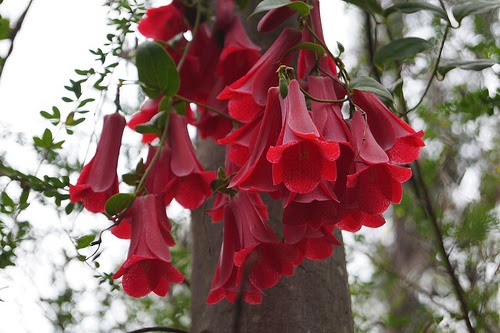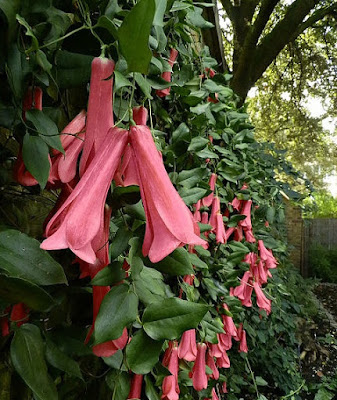 |
| The Chilean Bellflower - Lapageria rosea |
Commonly known as the Chilean Bellflower or Copihue, Lapageria rosea is an ornamental climbing plant noted for its gorgeous evergreen foliage and tropical effect, waxy blooms. Native to the Valdivian temperate rain forests flora of Chile, it can grow to a height of over 10 m high given favourable conditions.
 |
| Lapageria rosea seeds - http://home.onehowto.com/ |
In its native habitat, Lapageria rosea will be found growing in the humus-rich, lime-free soil. So when propagating from seed use a good quality ericaceous compost rather than a specific seed compost. Using 7.5 pots, sow at a rate of one seed per pot. Cover seeds with its own depth of compost or vermiculite. Place inside a heated propagator at a temperature of between 15-18 degrees Celsius or seal inside a clear polythene bag. Place in a warm bright position but avoid direct sunlight during the warmest part of the day. Germination will occur from 1-3 months.
 |
| Lapageria rosea - plantpostings.com |
Germination is somewhat sporadic and so each pot-grown seedling should be removed from the propagator or bag as it emerges and grown on under frost-free conditions. It can often take a couple of months for the root system to establish inside the pot so water sparingly during this period.
Lapageria rosea seedlings require very little plant food, and are known to be sensitive to fertilisers high in phosphates. Pot on as required into 20-25 cm pots or plant directly into the ground in dappled shade. In regions that experience prolonged freezing conditions, plant into a greenhouse border or overwinter under protection. Provide support for the young plants to climb and provide a minimum winter temperature of 7 degrees Celsius.
For related articles click onto the following links:
CLIMBING PLANTS FOR AUTUMN COLOUR


























